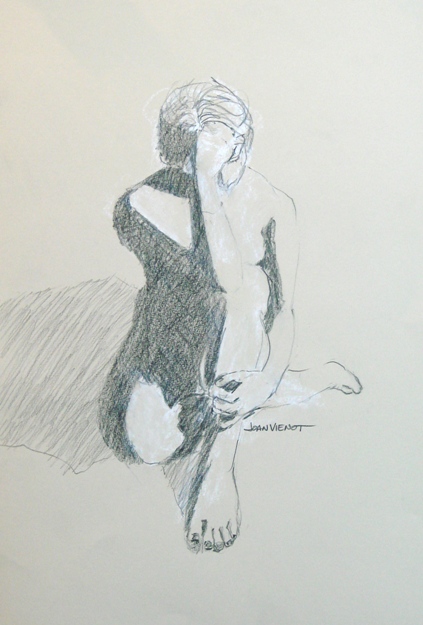
To a figure drawing artist, the title of this post is redundant, but the non-artist may not know that we use live models in figure drawing. To this point, I have been a bit of a fanatic about it, allowing errors and inaccuracies to be a part of the final drawing.
But I am thinking that I would like to take a photograph for reference for correcting and finishing a live-model drawing outside of the studio, away from the live model. My hesitancy to use a camera comes from my concern that I may lose some of the immediacy of expression if I work on my drawings very much outside of the studio. But I would like the accomplishnent of a more complete, or perhaps I should say, more technically accurate drawing, which can more easily be done, I think, with a less hurried pose or with a photograph for reference.
Next week I’m bringing a camera to the Wednesday night figure drawing session at Studio b., if the model doesn’t mind me taking a photo.
Following are a few warm-up gestures from this week’s session, followed by a drawing from a longer pose.
 |
 |
 |
 |




